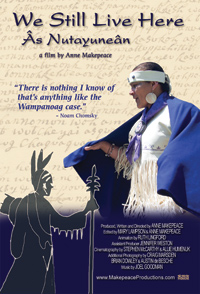There is a huge amount of linguistic diversity in the world. Isolation and drift due to cultural evolution can explain much of this, but there are many cases where linguistic diversity emerges and persists within groups of interacting individuals. Previous research has identified the use of linguistic cues of identity as an important factor in the development of linguistic diversity (e.g. Nettle, 1999). Gareth Roberts looks at this issue with an experimental paradigm.
This experiment was a game where individuals had to trade commodities in a series of rounds. At each round, individuals were paired up either with a team-mate or a competitor, though the speaker’s true identity was hidden. Players were given random resources, but scored points based on how ‘balanced’ their resources were after trading (that is, you were punished for having much more meat than corn, for example). A commodity given to another individual was worth twice as much to the receiver as to the donor.
Players could only interact through an ‘alien’ language via an instant-messaging system. Prior to the game, individuals learned an artificial language which they were to use in these interactions. All participants were initially given the same starting language. There were several conditions that manipulated the frequency with which you interacted with your team-mate and whether the task was competitive or co-operative. In the co-operative condition, four players were considered as part of the same team and the task was to get a high a score as possible. In the competitive condition the four players were split into two groups and the task was to score more than the other team. In this condition, then, the main task was to identify whether your partner was a co-operator or a competitor.
The results showed that, if players interacted frequently enough with their team-mates and were in competition with another group, then linguistic diversity emerged. Over the course of the game each team developed its own ‘variety’, and this was used as a marker of group identity. For example, in one game two forms of the word for ‘you’ arose. Players in one team tended to use ‘lale’ while players in the other team tended to use ‘lele’, meaning that players could tell group membership from this variation. Thus, linguistic variation arose due to the linguistic system evolving to encode the identity of the speakers.
The diversity seemed to arise both from drift and intentional change, both of which have been documented in the sociolinguistic literature. Roberts suggests that linguistic markers make good social markers because they are costly to obtain (so difficult for free-riders to fake), salient and flexible enough to cope with changing group dynamics. In the next post, I’ll be thinking about a similar experiment looking at how linguistic variation might arise in a co-operative scenario.
Roberts, G. (2010). An experimental study of social selection and frequency of interaction in linguistic diversity Interaction Studies, 11 (1), 138-159 DOI: 10.1075/is.11.1.06rob


 The story begins in 1994 when Jessie Little Doe, an intrepid, thirty-something Wampanoag social worker, began having recurring dreams: familiar-looking people from another time addressing her in an incomprehensible language. Jessie was perplexed and a little annoyed– why couldn’t they speak English? Later, she realized they were speaking Wampanoag, a language no one had used for more than a century. These events
The story begins in 1994 when Jessie Little Doe, an intrepid, thirty-something Wampanoag social worker, began having recurring dreams: familiar-looking people from another time addressing her in an incomprehensible language. Jessie was perplexed and a little annoyed– why couldn’t they speak English? Later, she realized they were speaking Wampanoag, a language no one had used for more than a century. These events In what is sure to be a more cited paper than Gould and Lewontin (1979), Douglas Ochs at Columbia University, together with a team of internationally renowned scientists (and probably a few internationally unknown graduate students), has found that all of humanity can be traced back to a large Pliocene-era goat.
In what is sure to be a more cited paper than Gould and Lewontin (1979), Douglas Ochs at Columbia University, together with a team of internationally renowned scientists (and probably a few internationally unknown graduate students), has found that all of humanity can be traced back to a large Pliocene-era goat. New footage has been filmed of a little known animal called the Streaked Tenrec in Madagascar. The footage shows the creatures can rub their quills together to make ultrasound calls and can also produce tongue clicks to each other which are outside of the range of human hearing. Because of the ultra sonic nature of these sounds, it has been unknown quite to the extent that these creatures can do this, before now.
New footage has been filmed of a little known animal called the Streaked Tenrec in Madagascar. The footage shows the creatures can rub their quills together to make ultrasound calls and can also produce tongue clicks to each other which are outside of the range of human hearing. Because of the ultra sonic nature of these sounds, it has been unknown quite to the extent that these creatures can do this, before now.